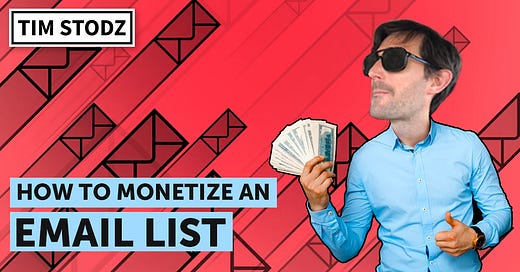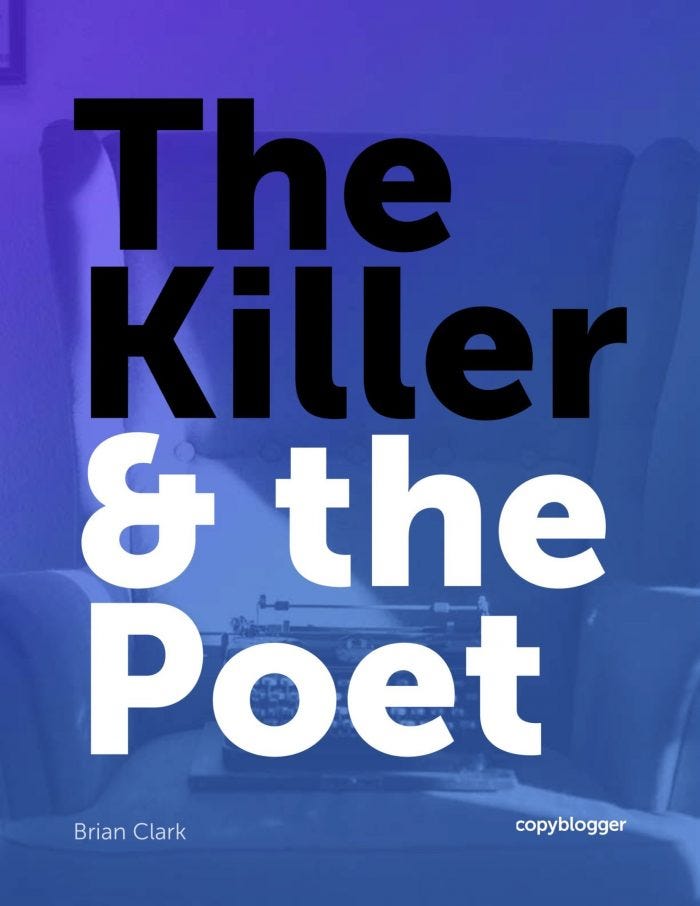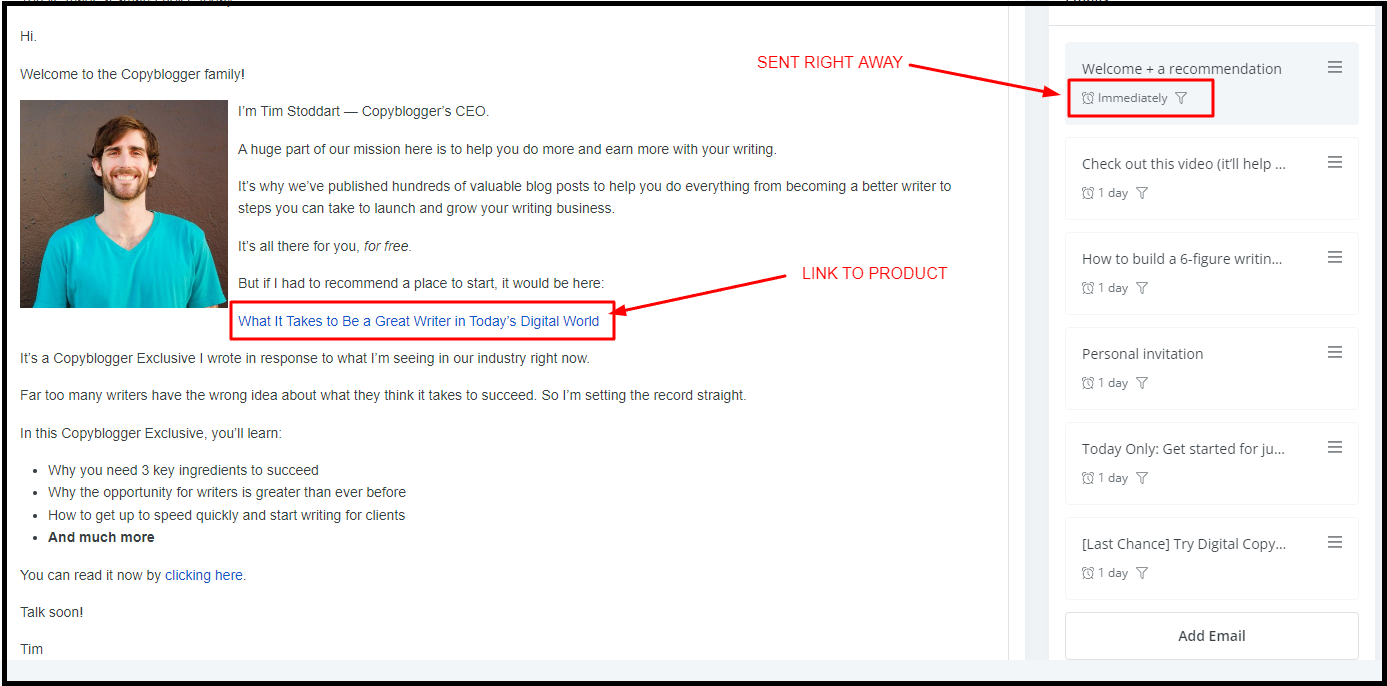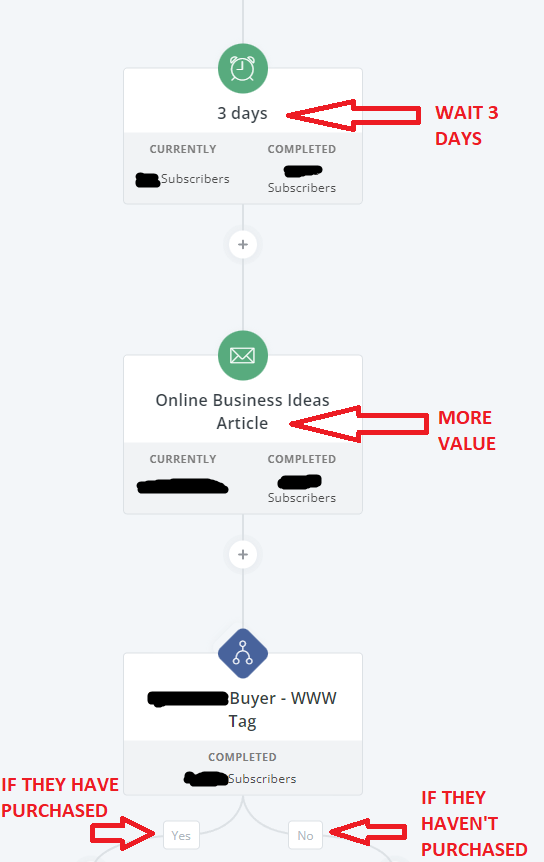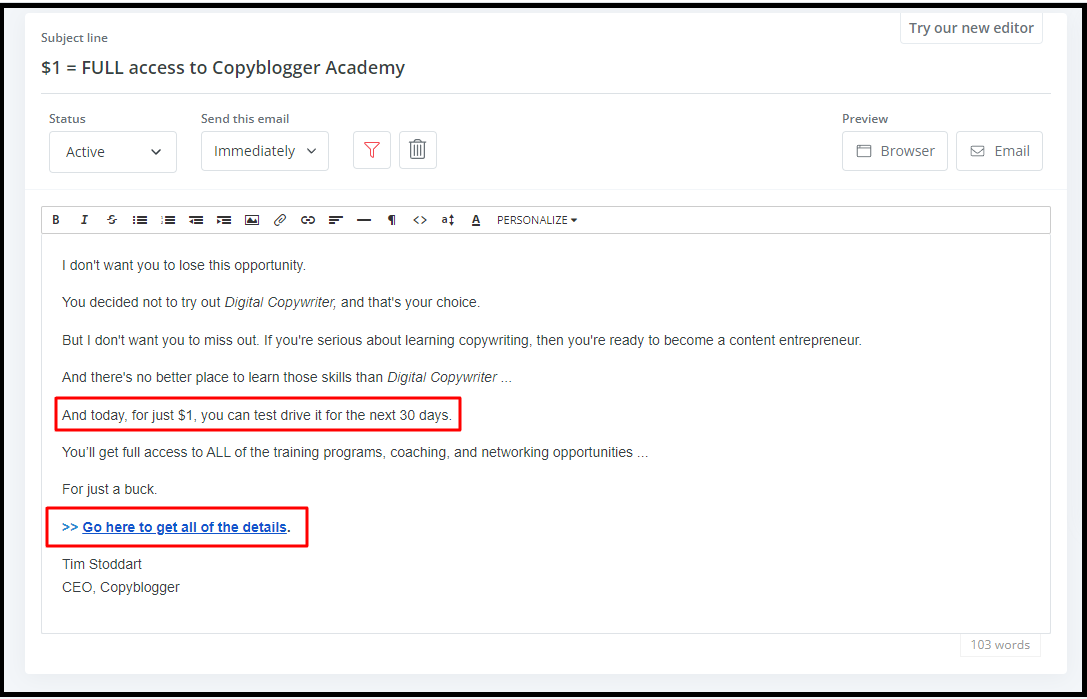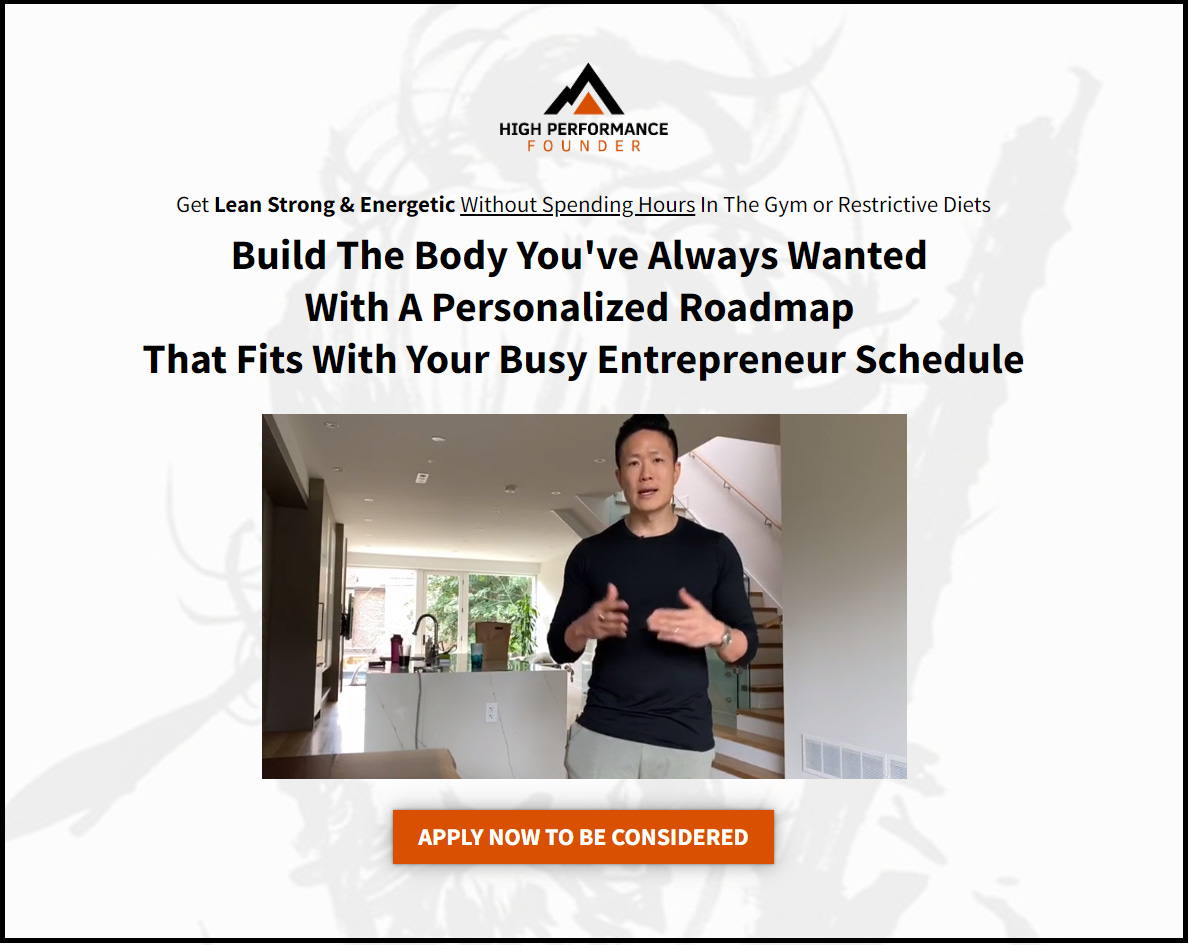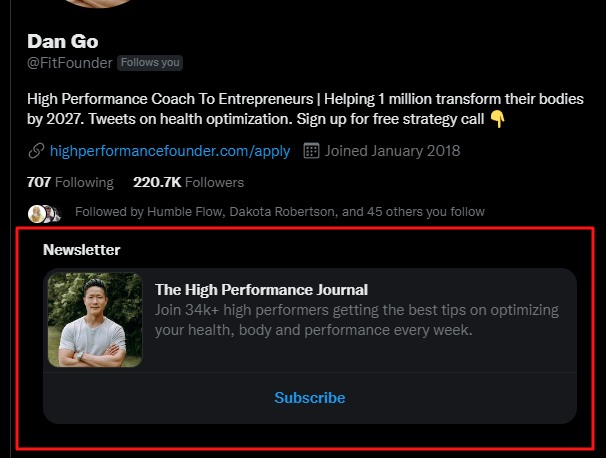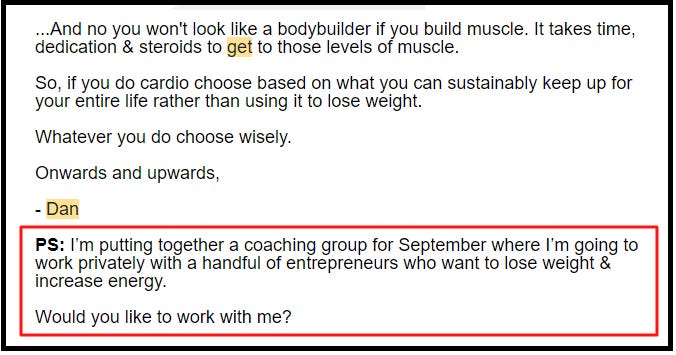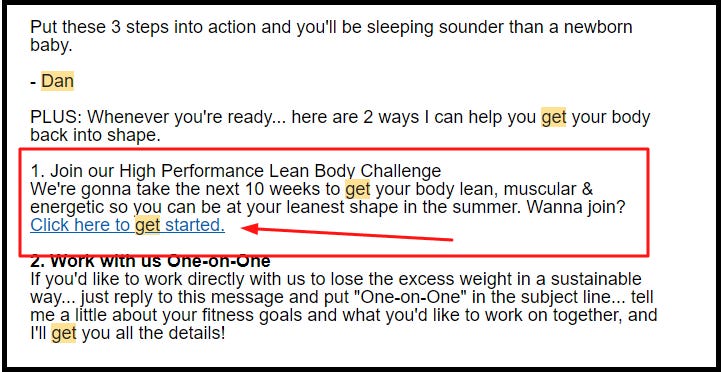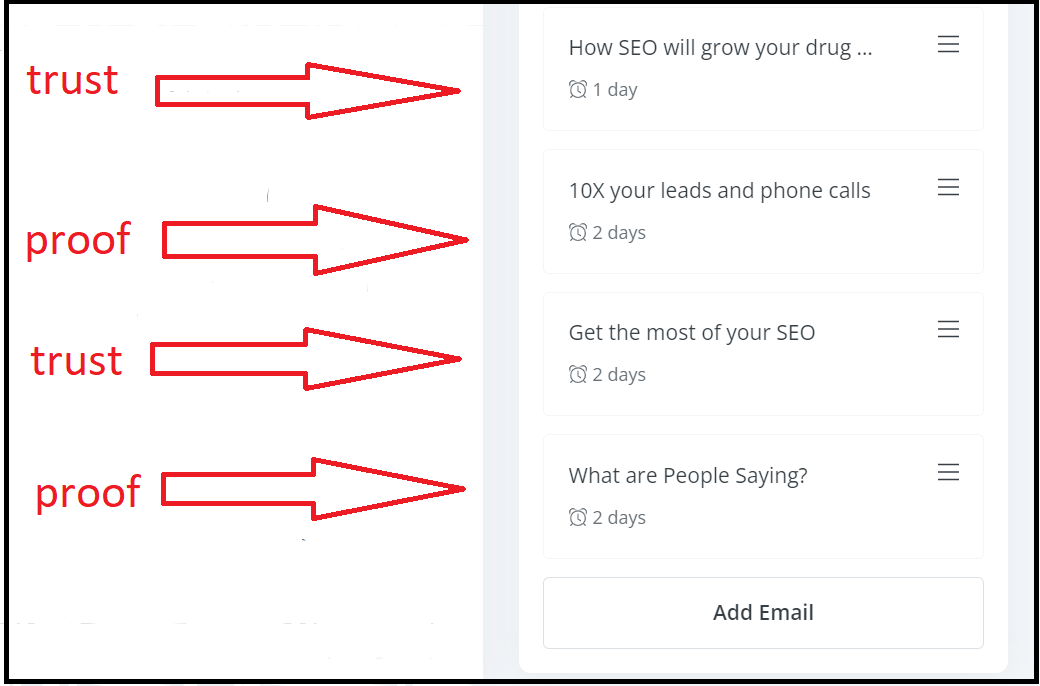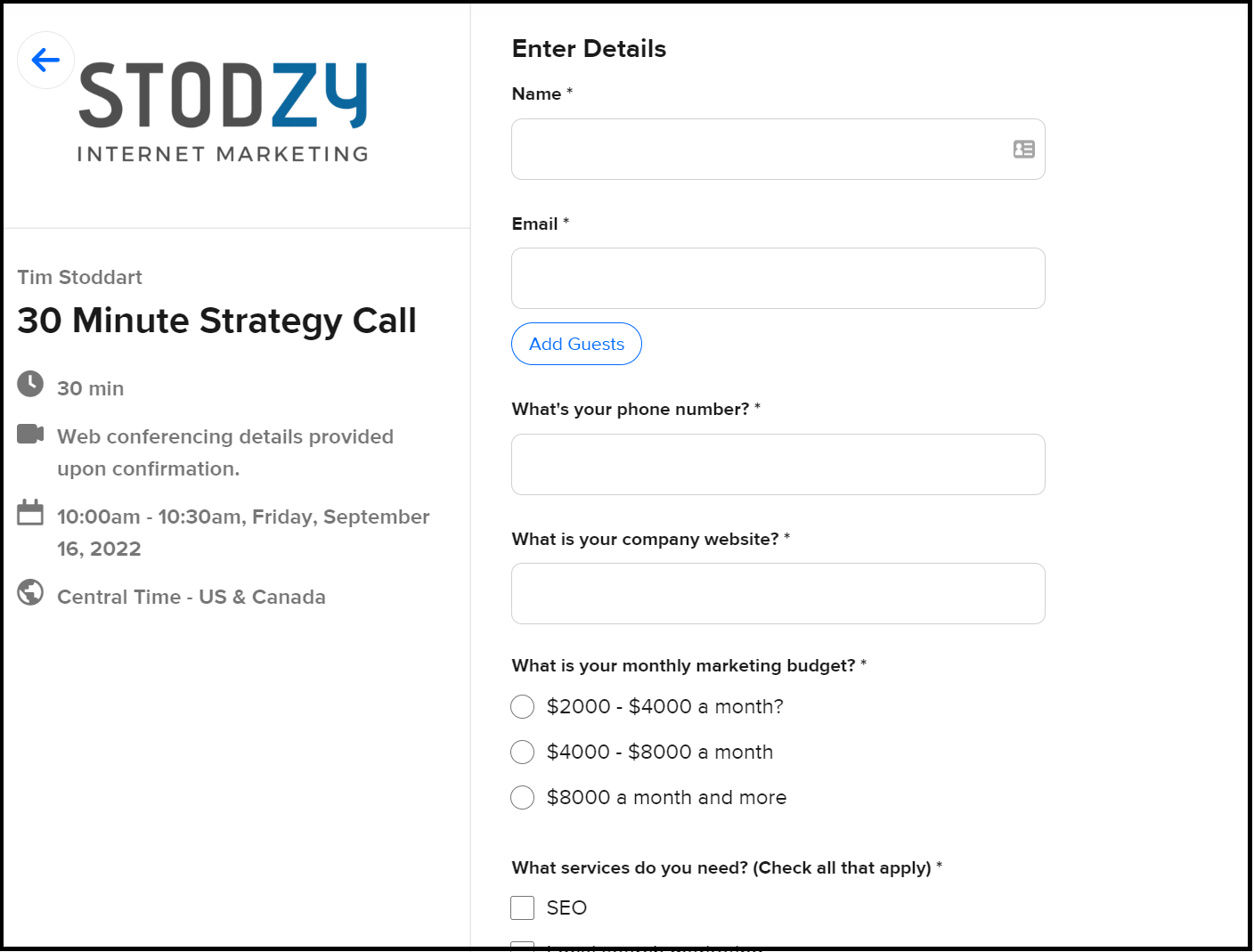How to Monetize Your Email List
If you want to build a successful business, you need to build an email list. Your email list is your most valuable asset.
However, an email list within itself is worth nothing. You can have millions of email subscribers, but if you're not generating sales, then what do you really have?
You need to actively monetize your email list. There are many ways to achieve this.
In this week's article, I will break down the best processes, tactics, and strategies you can use to make money off your email list.
First, Understand Why Email Works
Email is important because it's personal and permission based.
How infuriated are you when you get a spam email from an account that you never signed up for? You never gave that person permission to email you. In contrast, how much do you enjoy getting emails from your favorite writer or fashion brand?
For whatever reason, we have collectively decided that the email inbox is personal. We have a relationship with the people and brands whom we allow in our inboxes. You reserve your inbox for people who you know, like, and trust.
Your inbox is the digital version of your home. When you invite people into your home, you are (mostly) happy to see them. Your home is for neighbors, family, conversations, and parties. Your home is invitation only.
Now, imagine you walked in your front door and see a stranger standing in your kitchen. How would that make you feel? You would be furious, offended, and would perceive that person as an immediate threat.
This example is overly dramatic, but that's largely how we perceive our email inboxes as well. If you invite a person or brand into your inbox, it signals that you are interested in them. If someone shows up in your inbox unannounced, you perceive them as a threat.
It's an invasion of your personal space.
This personal relationship makes the inbox very versatile
As long as you have an invitation, you can talk about anything through email.
It doesn't matter what industry your business is in, email will work.
This isn't the case with other distribution networks. For example, healthcare businesses do terrible with social media marketing. Ecommerce brands work particularly well on Instagram and Facebook, but have terrible results on Twitter.
But email works for everything. It doesn't matter if you're business is ...
ecommerce
an agency
services
a coffee shop
digital products
lead generation
portable car wash
Email will work for you, because if you've been "invited" into someone's inbox, that means your subscribers are actually interested in what it is you have to say.
Spend all your efforts in building an email list. After you've mastered the craft of gaining email subscribers, then you have to learn the next step.
The next step is to get paid!
Let's go through your options.
Start a Newsletter and Monetize Through Ads
An ad based newsletter is the most straight forward way to monetize an email list.
There are pros and cons to this model. I've written an entire guide on monetizing a newsletter which will give you much more detail if this is a model you're serious about.
Here are some simple guidelines to follow.
1. Make sure you are writing for an audience that actually buys things - This is why B2B newsletters can be so profitable. If you're writing for an audience of business professionals, you can assume there will be a list of products and services who want to get in front of those business professionals.
I recently had an AMAZING conversation with Matt McGarry on this exact topic.
2. Don't overcomplicate it - You may think that newsletters need to be long and robust, but that's not the case. Some of the most profitable and successful ad based newsletters can be read in 1 or 2 minutes.
3. Simplify the sales cycle - The bottleneck in selling advertisement is the sales process itself. You will probably underestimate how much time and effort it takes to close deals and gather all the information needed to properly present an ad on your newsletter. For that reason, I recommend automating it as much as possible.
This is exactly why I created my own ecommerce functionality that allows my advertisers to submit all the information themselves and pay directly through Stripe.
Some good advice I heard ...
I recently did a newsletter swap with Stacked Marketer. The CEO and I had a great conversation. He knows more than I do about the newsletter business and his advice was something that I appreciated.
He said ...
There's no reason to wait for a certain subscriber count to start selling ads. Your audience has value to someone. Even if you only have 1000 subscribers, you should get your audience comfortable with seeing ads.
He was right, and as such, I will pass that advice to you.
You're never "too small." If someone is willing to pay you to get in front of your audience, say yes. Use the ad as data and always look for opportunities to improve your copy and make your newsletter more and more valuable to advertisers.
It will pay off in the end.
Sell Digital Products through High Level Automation
This is my favorite way to monetize an email list.
Ever since buying Copyblogger, I have learned so much about how to effectively sell products. Below is a behind the scenes look at how I created my email automation for Copyblogger.
I love this strategy because once I have created a product that people love, I can focus all my attention on growing the email list itself, because the automation does the sales for me.
Here we go...
Step 1 - Have something worth subscribing to
Brian Clark put together a brilliant report and analysis of the state of content marketing. This report gives us a huge advantage for getting subscribers.
This report is so useful and compelling, that people routinely recommend it to each other through Twitter, which has generated even more email subscribers.
It took weeks to write this report, but it was worth it.
Lesson: Don't skimp on the free giveaway. Make your free content better than everyone else's paid content, and you will win.
Click here to download the report and see for yourself.
Step 2 - Start selling RIGHT AWAY!
The reason why most people don't convert on sales in their automations is because they hesitate to sell.
You want to introduce and promote your product RIGHT AWAY!
When someone signs up for The Copyblogger newsletter, they are IMMEDIATLY sent an email where I introduce myself and also introduce Digital Copywriter, which is our membership community.
I'm not telling you to come out guns blazin'. You can be subtle and tasteful in your first email, and then ramp up the urgency later on in the automation. But at the very least, make your subscriber is aware that your product exists and that they should buy it.
Most of you will see low conversion rates on your product sales because you're afraid of being too "salesy" and you don't want people to unsubscribe.
Get over that fear right away. If people unsubscribe, it means they weren't a good fit in the first place. And if you don't promote yourself, that means no one will buy your product.
You need to get after it. Learn copywriting and sell!
Step 3 - Wait, and then give a less committed offer (with a higher price point)
If someone goes through the entire sales automation and doesn't purchase your product, that doesn't mean you should give up.
It may mean that there is an offer you can present to the subscriber that makes more sense for them in the current time and place in their lives. Remember, your job is to be of service, so try to meet them where they are.
What I like to do is build my automation to give a second offer. This gets a bit technical, so pay attention.
Here is how the automation looks in ConvertKit.
The 3 day delay happens after the original sales automation has run its course. If they got through the entire automation, I give my subscribers a breather.
After 3 days, I put them into another email sequence that gives them more case studies, a free webinar, and even a masterclass I did with Nicolas Cole.
After the subscriber has enjoyed the series of free content and value, they are put through a condition.
If the user has purchased a membership to Digital Copywriter, than they are given a tag called "Buyer - WWW Tag." So if the subscriber has the tag, they are sent to one sequence where they are not pitched the product and are subscribed to the weekly newsletter.
If they don't have the tag, that means they haven't purchased the product. In this case, the subscriber is put through the sequence below.
Once they enter this sequence, they get 3 days to take advantage of the 30 day trial for only $1.
The first automation sells them access to a monthly offer, and the $1 trial period demands they pay for the full year after completing their 30 day trial.
Now, if they cancel before the 30 days, that's fine. It's part of the game.
There will be a large percentage of users who simply sign up to get $1 access for 30 days and cancel. However, there will also be a significant percentage of users who decide to stick around and then pay full price for the year long membership.
These are members that wouldn't have otherwise signed up.
Sure, we open ourselves up to being "taken advantage of" by people who want everything for free, but by and large, people are genuine in their interest in the product and this second offer generates great revenue for the company.
Now, the automation tactic I presented to you works for my membership product, but it will also work for self paced courses and cohorts.
You may have to get creative with your offers, but there is always a way to execute.
The purpose of the second automation is to decrease the risk for the user, and in exchange, increase the profit margins for the business. It's a win / win for everyone.
Sell Services Through Email
I'm amazed at how few people use email to sell their services.
Email marketing will generate sales if you're starting an agency, a personal training business, a cleaning service, or even a landscaping company.
A one page website and an email signup form is all you need. If you focus all your efforts on getting email addresses (even with paper and a clipboard) then you can follow the strategy I've presented and your phone will ring off the hook.
Here's what you do.
We don't need to over complicated this
All you need is a one page website that explains what you do and a way to generate email signups.
I think Dan Go is an amazing example of this. You can see that the link in his Twitter bio goes directly to a one page website where he books applicants for his coaching program.
Also in his Twitter bio, he makes it very easy to sign up for his email list. He uses the revue email collection system, which I assume imports directly into his EMS.
Dan doesn't use the same approach I do. Rather, he likes to use email to give advice, give insights, and speak directly to his audience. He's much less of a "hard seller" than me, which is fine.
The reason why it works is because Dan almost never sends an email that doesn't have a call to action in it which promotes his coaching business.
In this example, he asks a simple question to provoke a response.
In another example, he puts a link at the end of the essay which leads to a contact form.
Here's how I do it in my personal business ...
One of the ways I generate clients for Stodzy is through email automation.
Even though the process is similar to what I showed you with Copyblogger, there are some important differences to point out.
When an interested reader signs up for the Stodzy newsletter, they get put into an automation.
In order to get clients through email (as opposed to selling products) what you need to do is send emails that alternate between messages that establish proof and trust.
Proof means evidence that you have done this before. This could come in the form of case studies or screenshots of results you have already generated. This is an example of "you don't have to listen to what I say, just look at what I've done."
Trust means that your reputation is in tact. This could come in the form of testimonials or reviews. An example of this is "what are others saying about the results I have generated?"
At the end of each email, I give a P.S. message that gives the option of having a FREE strategy session with me.
If they decide to take advantage of the offer, the link sends them to a Calendly page, where they make an appointment and fill out the details of their account.
What's great about this strategy is that since the prospects are reaching out to me, it means that I know they are actually interested in hiring me.
It's not to say that every single deal will close, because there is always the possibility that the prospects are shopping around and looking for the best option. However, the fact that they voluntarily signed up for my newsletter, and then voluntarily read the "trust and proof" emails, and THEN voluntarily booked an appointment greatly increases the likelihood that the deal will close.
It's a game of probabilities. And the probability of these leads turning into signed contracts is high.
Keep Your Eye on the Prize
I hope by now you see why email is the best mechanism for turning attention into money. I feel like I say this every week, but it's worth repeating 100 times.
It's critical that you remain focused on the purpose of your work. You are working hard so you can build a business, increase your income, provide for yourself, and live the best life possible.
Don't get caught up in the game of attention seeking for attentions sake.
Focus on the end game.
The reason why you are working so hard is because you want to make money. You shouldn't be ashamed of that or intimidated by it. Email is how you make money.
All other marketing channels (SEO, social media, or even word of mouth) are ways to generate attention. This attention is great, but it's only half the battle.
Turning that attention into money is a different practice entirely. In my experience, the best way to do this is by having conversations with people, or by writing great copy that articulates your offer through email.
These simple methods put money into my bank account every day. They can do the same for you.

